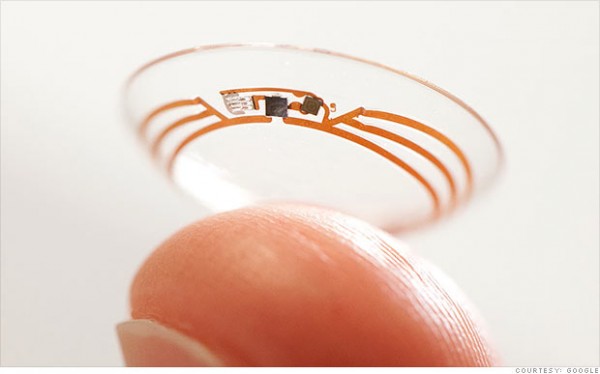Tag Archives: medical devices
Google Glass Isn’t Google’s Only Eyewear

Most people wear contacts lenses to improve eyesight, but Google’s new contacts are designed for something entirely different–measuring blood sugar levels.
Google is well known as a search engine giant, as well as for some of the additional products and services they provide, such as Gmail, Google Docs, Android, etc., but one of the most amazing parts about the company are its “moonshot” projects such as Google’s self driving cars, balloons that provide wireless internet, Ara, the modular phone, and Google Glass.
Google Glass isn’t the only eyewear project Google has in development, though. Google recently filed two patents for sensors in contact lenses to read and monitor the wearer’s tears for blood sugar levels and alert when blood sugar gets too low.
This is one of the more specific use cases we’ve seen developed for wearables, with most wearable technologies focusing on fitness or connectivity or notifications. Success in the development of something like this won’t only be a boon to the medical community, but a proof that there’s room to leverage technology in more of our products than watches.
Google doesn’t yet have FDA approval, but considering the patents were just filed, there’s no cause for alarm yet. Approval will be required before the contacts can go to market, though.
The implications of medical sensors small enough to fit into a contact lens (thinner than a strand of hair!) are significant, though, with many other potential applications before we even start talking about science fiction level technology such as telephoto capabilities and a Google Glass-like heads up display or other augmented reality features.
Even expanding the context out of this particular form factor, technology of this size with appropriate capabilities could provide a major push for advancement and diversity in many other areas of consumer technology, such as non-contact lens wearables. This level of miniaturization could allow for sensors of all kinds to be embedded in clothing and other products to provide us even more casual data about the world around us.
Google has other medical gadgetry coming down the tube in the near future as well, such as their biometric password ingestible capsules. If this is just the start of these gadgets, we can expect some really cool (and crazy) technology in the next few years.
Source: Mashable
Be social! Follow Walyou on Facebook and Twitter
Read more on Walyou, Android and Google Services Are About to Get Hitched, Project Ara Aims to Create Entirely New Mobile Industry











